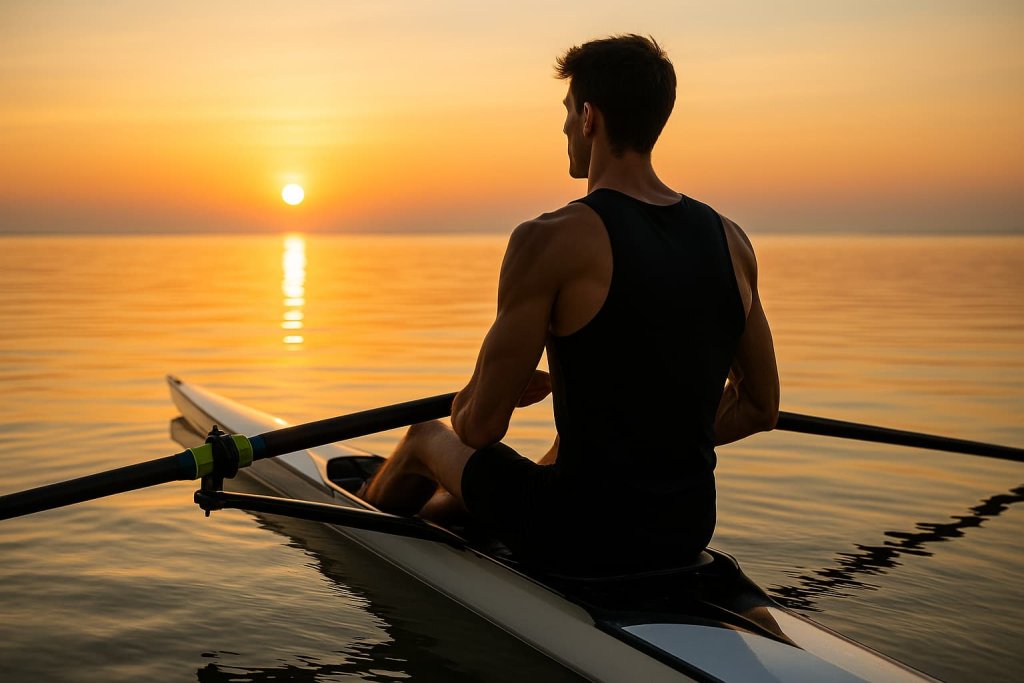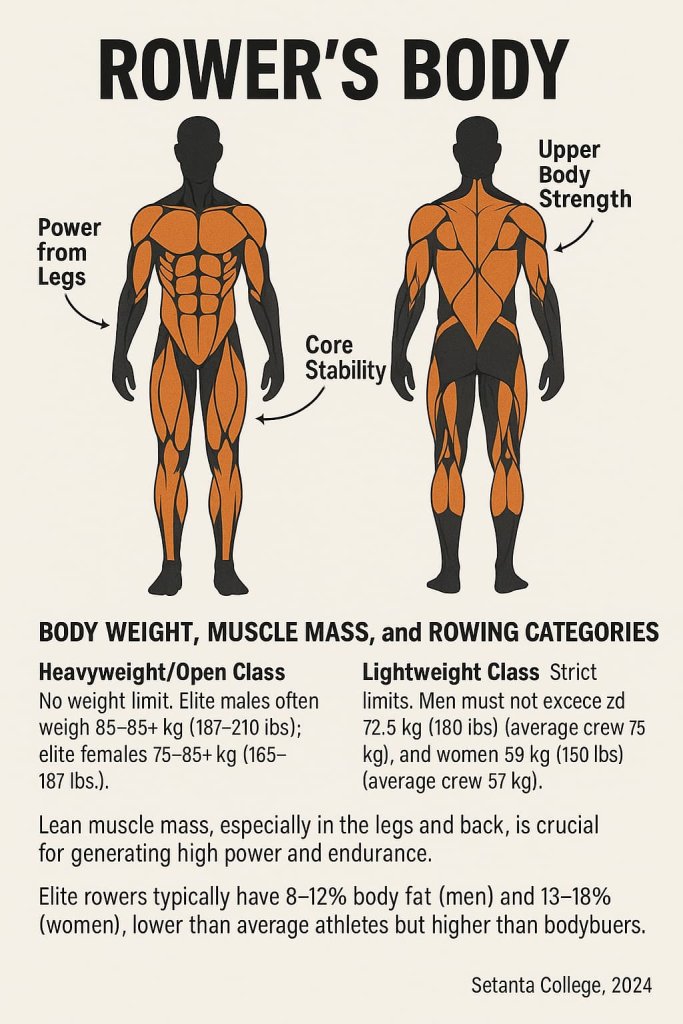The ideal rower body type for rowing is typically tall, lean, and muscular, with long limbs and a low body fat percentage. Height and limb length provide a mechanical advantage, but success in rowing also relies on technique, strength, and determination. Understanding the ideal rower physique helps athletes maximize their performance, whether they compete in heavyweight or lightweight classes.

If you’re wondering what makes a rower’s body unique, or how your build might fit into the sport, you’re in the right place. Below, we’ll break down the key physical traits, scientific research, and what really matters for both aspiring and elite rowers.
For official standards, check the World Rowing Classification Rules.
What Physical Traits Define the Ideal Rower Body Type?
- The most successful rowers are generally tall, with long arms and legs.
- Recent studies show elite male rowers typically stand 187–195 cm (6’1”–6’5”), and elite female rowers range from 175–185 cm (5’9”–6’1”).
- Longer limbs help rowers create more powerful strokes with each pull, improving boat speed and efficiency.
- Example: Many Olympic medalists are over 6 feet tall with proportionally long arms and legs.
- British Journal of Sports Medicine, 2023
Body Weight, Muscle Mass, and Rowing Categories

- Heavyweight/Open class: No weight limit. Elite males often weigh 85–95+ kg (187–210 lbs); elite females 75–85+ kg (165–187 lbs).
- Lightweight class: Strict limits. Men must not exceed 72.5 kg (160 lbs) (average crew 70 kg), and women 59 kg (130 lbs) (average crew 57 kg).
- Lean muscle mass, especially in the legs and back, is crucial for generating high power and endurance.
- Elite rowers typically have 8–12% body fat (men) and 13–18% (women), lower than average athletes but higher than bodybuilders.
- Setanta College, 2024
Is There a “Perfect” Rower Physique?
- While being tall with long limbs is a proven advantage, rowing rewards athleticism, skill, and mental resilience.
- Lightweight rowers often excel by maximizing efficiency, technique, and cardiovascular fitness, not just size.
- Training, recovery, and nutrition play a massive role in shaping a rower’s body and performance potential.
- Mental strength and work ethic often distinguish champions from the rest.
Key Body Measurements: Rowing Champions in Numbers
| Category | Typical Height | Typical Weight | Body Fat % | Notes |
|---|---|---|---|---|
| Men Heavyweight | 6’1”–6’5” (187–195 cm) | 187–210 lbs (85–95+ kg) | 8–12% | Tall, muscular, high power output |
| Women Heavyweight | 5’9”–6’1” (175–185 cm) | 165–187 lbs (75–85+ kg) | 13–18% | Tall, lean, strong |
| Men Lightweight | 5’11”–6’2” (180–188 cm) | ≤ 160 lbs (≤ 72.5 kg) | 8–10% | Lean, efficient, cardiovascular focus |
| Women Lightweight | 5’7”–5’11” (170–180 cm) | ≤ 130 lbs (≤ 59 kg) | 14–18% | Height and leanness prioritized |
Source: World Rowing, 2024
Why Are Rowers Built This Way? (Biomechanics Explained)
- Tall athletes with long arms and legs generate more leverage, making each stroke longer and more powerful.
- A strong, muscular lower body and back provide the main force for each stroke, supported by a solid core.
- Low body fat improves endurance and boat speed, while preserving energy for long races.
- Even at elite levels, rowers come in different shapes—what matters most is power relative to body weight and technical skill.
Can You Become a Great Rower If You Don’t Fit the Ideal?
- Many successful rowers have “non-traditional” builds and excel thanks to technique, work ethic, and adaptability.
- Coaches recommend focusing on improving strength, flexibility, cardiovascular fitness, and rowing form, rather than obsessing over height or limb length.
- Athletes can choose the weight class that best fits their natural body type, maximizing their own strengths.
- If you’re passionate and consistent, you can reach your rowing goals—regardless of your starting point.
- USRowing: Getting Started
Frequently Asked Questions
1. Can shorter athletes compete in rowing?
Yes, especially in lightweight and club categories. Good technique and fitness can overcome a height disadvantage.
2. What about body fat for rowers?
Elite male rowers typically have 8–12% body fat; females 13–18%. Too little fat can harm health and performance.
3. Are there different body types for different rowing events?
Yes. Shorter, lighter athletes may prefer sculling or lightweight events, while taller, heavier athletes often excel in open/heavyweight classes.
Conclusion
In summary, the ideal rower body type is tall, lean, and strong, with long arms and legs for mechanical advantage, but dedication and technique are just as important.
If you love rowing, focus on developing your strengths, improving your fitness, and learning proper technique.
Want to get started or improve? Visit World Rowing’s Official Resources or USRowing’s beginner guide for the latest training advice and community support.
